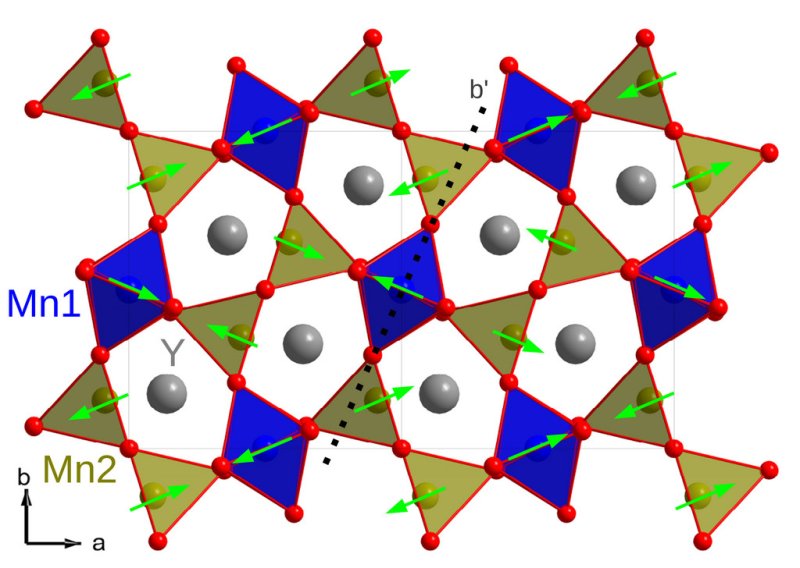The crystal structure of YMn2O5, which is made of yttrium, manganese, and oxygen. The oxygen atoms are shown in red and the yttrium atoms are gray. The magnetic moments on the manganese are shown as arrows. Ferroelectric polarization occurs between the oxygen and manganese atoms. Credit: Brookhaven National Laboratory
UPTON, N.Y., July 25 (UPI) -- U.S. researchers say a class of metals with special properties could bring faster and energy-efficient logic, memory and sensing technology.
Researchers at the U.S. Department of Energy's Brookhaven National Laboratory say the metals, knows as multiferroics, show a rare coupling of magnetic and electric properties that normally either ignore or counteract each other.
Ferromagnets are materials that display a permanent magnetic moment, or magnetic direction, while ferroelectrics are materials that display a permanent electric polarization, a set direction of charge, and respond to the application of an electric field by switching this direction.
But multiferroics, or magnetic materials with north and south poles that can be reversed with an electric field, are rare in nature, as ferroelectricity and magnetism tend to be mutually exclusive.
Brookhaven scientists say they have found a new way that electric and magnetic properties can be coupled in a material, a laboratory release said Monday.
They used extremely bright beams of X-rays to examine the electronic structure of a particular metal oxide made of yttrium, manganese, and oxygen.
They determined that the magnetic-electric coupling is caused by the outer cloud of electrons surrounding each atom mixing to create the material's atomic bonds
"Previously, this mechanism had only been predicted theoretically and its existence was hotly debated," Brookhaven physicist Stuart Wilkins said.
"In principle, the coupling of an ordered magnetic material with an ordered electric material could lead to very useful devices," he said. "For instance, one could imagine a device in which information is written by application of an electric field and read by detecting its magnetic state. This would make a faster and much more energy-efficient data storage device than is available today."
"What is especially exciting is that this result proves the existence of a new coupling mechanism and provides a tool to study it."















